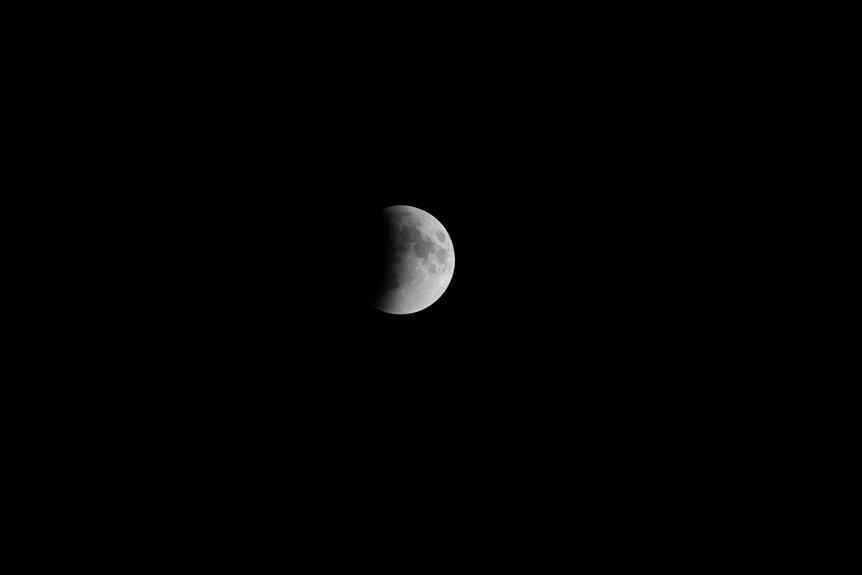Can You Watch the Supermoon and Partial Lunar Eclipse in Australia Today? We’ve Got Good News and Ba
Australians will have the opportunity to witness a rare and spectacular celestial event tonight, with a supermoon reaching its fullness at 12:34 PM (AEST) before evening rise, appearing larger and brighter in the night sky due to its closest approach to Earth. However, the accompanying partial lunar eclipse, which starts at 10:41 AM (AEST), peaks at 12:44 PM, and ends at 2:47 PM, will not be visible in Australia due to its daytime occurrence, covering 8.4% of the moon at peak. Ideal viewing times and more details on this significant astronomical event are available.
What Is a Supermoon
A supermoon occurs when a full moon coincides with the moon's closest approach to Earth in its elliptical orbit, resulting in a remarkably larger and brighter appearance in the night sky.
This phenomenon holds significant value for skywatchers globally, offering a rare opportunity to observe the moon in its most striking form.
While some supermoon myths suggest that this event has profound effects on the Earth's tides and natural phenomena, scientific evidence supports its aesthetic significance rather than a substantial impact on the planet's dynamics.
As NASA confirms this supermoon as one of the year's closest, its proximity to Earth makes it a spectacular sight, with the moon appearing larger and brighter than regular full moons, enchanting the attention of astronomers and enthusiasts alike.
Viewing the Partial Eclipse
While the supermoon's striking appearance in the night sky certainly captivates astronomers and enthusiasts alike, the occurrence of a partial lunar eclipse alongside this phenomenon is a notable event, albeit not visible in Australia.
As a significant lunar event, the partial eclipse contributes to the supermoon's significance, underscoring the complexity and intrigue of celestial occurrences.
Unfortunately for Australian viewers, the timing of the eclipse – beginning at 10:41 AM (AEST), peaking at 12:44 PM, and ending at 2:47 PM – falls during daytime hours, rendering it invisible in the daytime sky.
However, online livestreams are available for those keen to observe this rare lunar event, which is visible in regions of America and Europe.
This partial lunar eclipse will cover 8.4% of the moon at peak.
Observing the Supermoon Tonight
Tonight's supermoon promises to be a spectacular sight, as the moon reaches its fullness at 12:34 PM (AEST) before rising in the evening sky. This event offers a unique opportunity for moon photography, as the moon will appear notably larger and brighter than regular full moons. To maximize viewing conditions, consider the following:
| City | Moonrise Time | Best Viewing Time |
|---|---|---|
| Sydney | 6:00 PM | 8:00 – 10:00 PM |
| Melbourne | 6:26 PM | 8:30 – 10:30 PM |
| Brisbane | 5:33 PM | 7:30 – 9:30 PM |
| Perth | 6:26 PM | 8:30 – 10:30 PM |
| Adelaide | 6:48 PM | 8:50 – 10:50 PM |
When capturing the supermoon, take advantage of the night sky's darker conditions to produce high-quality images.
Supermoon Facts and Figures
The occurrence of a supermoon is a rare astronomical event that offers a unique opportunity to observe the moon in its fullest glory. This phenomenon holds great supermoon significance, as it allows us to witness the moon's majesty at its closest proximity to Earth.
The supermoon history dates back to 1979, when astrologer Richard Nolle coined the term to describe a full moon that occurs within 90% of its closest approach to Earth. According to NASA, this event marks the second of four consecutive supermoons in 2023, with the upcoming supermoon in October also expected to be remarkably close.
With this rare alignment, skywatchers can expect a spectacular display of the moon's grandeur, making it an event of great astronomical importance.
Lunar Eclipse Explained
Observing a lunar eclipse offers astronomers a unique opportunity to study the Earth-moon system and gain insights into the celestial mechanics at play. A lunar eclipse occurs when the Earth blocks sunlight to the moon, resulting in a range of lunar phases.
The September 18 eclipse will cover 8.4% of the moon at peak, marking a partial lunar eclipse. The eclipse significance lies in its ability to provide valuable data for astronomical studies, particularly in understanding the Earth's shadow and its effects on the moon.






